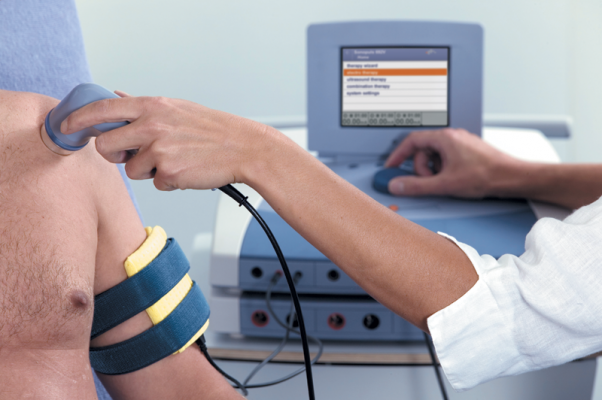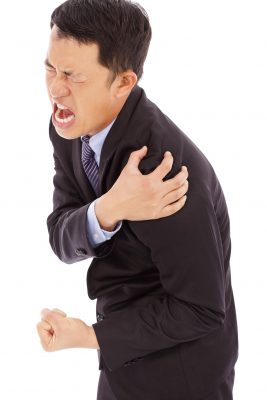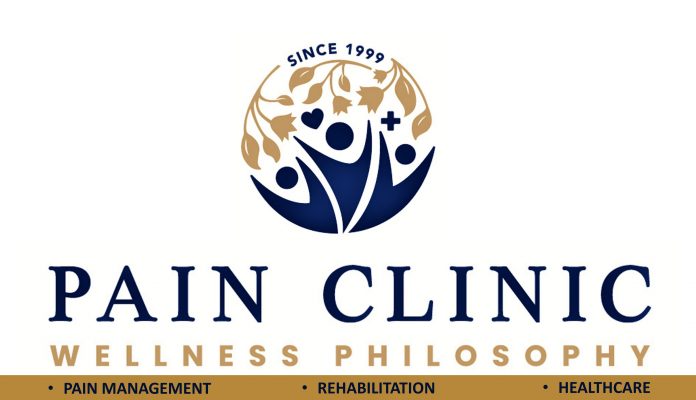No products in the cart.
Pain Management
How to Heal The Pain from Frozen Shoulder in Singapore
SHOULDER PAIN THERAPY
It is very common that we may experience neck stiffness and shoulder tension however, if you have suffered shoulder pain over a prolong period of time then, it is a pain condition you simply do not want to ignore.
WHAT IS FROZEN SHOULDER
ANATOMY SHOULDER JOINT:
Shoulder joint is rather complex, your arm or humerus bone is a ball shape like structure on the upper part of the arm which is attached to the a deep hole that is known as socket of the shoulder blade(scapular bone). So, the shoulder joint is also known as the glenohumeral – is called ball-and-socket joint. The shoulder capsule ligament around the shoulder joint help to stabilize and protecting the ball and socket joint hence, giving you the full range of motion of your shoulder movement.
Hence, giving you the full range of motion of your shoulder movement like adduction, abduction, flexion, extension, internal rotation, external rotation, and 360° circumduction in the sagittal plane (Left & Right view of body part).

Also known as adhesive capsulitis, frozen shoulder is a condition characterized by stiffness and pain in shoulder joints.
Typically, signs and symptoms appear gradually, worsening over time and then resolve.
What are the common symptoms of frozen shoulder?
- Dull aches on the anterior and lateral deltoid muscle
- Stiffness and pain around the shoulder joint
- Limited range of motion
- Tenderness
What are the common risk factors of frozen shoulder?
- Having Diabetes Type II
- Adopting poor sleeping postures
- Leading a sedentary lifestyle, i.e. computer work, no exercise
Other than having a health condition which puts on at risk, poor sleeping posture is another prevalent cause of frozen shoulder that we can all control and improve. Poor sleeping postures are depicted by habitual/repetitive sleeping on one side of the body. Most of us adopt this sleeping position of sleeping laterally (on the side) because of its comfortability. However, it is catalyst for individuals to experience shoulder pain or frozen shoulder. The weight bearing from sleeping on one side of the body progressively accumulates tension and tenderness on the shoulder. Such experiences of shoulder pain include nerve-pinching sensations causing numbness or tingling pain.
Sleeping on one’s back is therefore the most recommended sleeping posture to adopt, as it keeps the spine aligned and provides support for the body (from the lower back down to your knees especially when there is a pillow below the knees).
WHAT CAUSES FROZEN SHOULDER?
There are various muscles, ligaments and tendon that are responsible for the shoulder joint movement. So the most common shoulder pain symptom involves in the relevant part are trapezius muscle imbalance, adhesive capsulitis (inflammation of capsule tissue) or commonly known as frozen shoulder, subacromial bursitis, bicep tendinitis, teres minor & major muscles pain, infra & supraspinatus tendinitis, deltoid muscle pain, dislocation, subluxation etc;
Common pain causes are related to:
- Tendon inflammation (bursitis or tendinitis)
- Instability of joint
- Shoulder Labrum Tear (SLAP tear)
- Imbalance muscle spasm
- Arthritis
- Fracture (broken bone)
- Sports Injuries
There are other common shoulder pain that are the result of our daily poor posture, eg:
- Computer work station posture pain
- Poor and Inadequate pillow support Sleeping posture
Sleeping posture
- Poor sleeping posture is another prevalent shoulder pain related to habitual of repetitive sleeping on one side of the body. Everyone has a comfortable sleeping posture habit and typically most of the shoulder pain or frozen shoulder are the result of sleeping laterally (on the side).
- The weight bearing sleeping on one side of the body progressively accumulated the tension, tenderness on the shoulder. The typical complaints of such shoulder pain are nerve pinching sensation causing numbness tingling pain. It may be exacerbated and resulted into adhesive capsulitis also known as frozen shoulder.
Pathologically speaking imbalance muscle weakened or strain the muscles, stress the ligament and the tendon due to poor posture.
Signs and Symptoms of Frozen Shoulder
There are 3 different common types of pain commonly associated to shoulder pain:
- Acute pain
- Chronic
- Neuropathic Pain (Numbness tingling sensation pain)
Over the years I have seen many patient’s shoulder pain is the result of seated with rounded shoulder with both the arm extended far out from the body, with neck and head protruded from the shoulder at the work station.
Such common typical work station related injuries inflicted various part of the shoulder joint and muscle over extended time and progressively resulted in injury.
The Scapula (shoulder blade) muscles are lengthened with the shoulder rounded to the front causing tension and stress on the shoulder blade, pulling and causing extreme stress on the shoulder muscle (infraspinatus muscle). Such a kyphotic (slouching) sitting posture with both arm extended far out causes tenderness & sore pain on the tricep, teres minor and major muscle.
With both arm rounded to the front squeezing the front pectorialis muscle (Chest muscle) constantly lead to pulling on the supraspinatus tendon, accumulate extreme tension on the bicep tendon.
The typical pain and health adversities on frozen shoulder are:
- feeling fatigue
- shoulder pain
- Numbness and tingling sensation on the shoulder blade
- Radiating pain on the arm
- Neck Stiffness
- Weakness of the arm
- Rotator cuff pain
There are typically 3 stages of frozen shoulder pain symptoms:
Freezing stage:
You will begin to feel the pain with some movement on the shoulder. At this stage you are able to move your shoulder but limited range of motion. The pain symptom persist over time and gets more severe, it hurts more usually in the night which can disrupt your quality of sleep. This stage symptom may last from 6 to 9 months.
Frozen stage:
At this phase the pain may improve however, the stiffness of the shoulder gets worsen, the range of motion(ROM) are limited and restrictive, which will disrupt the daily activities like stretching your arm, putting on shirt or polo shirt etc; at this stage usually it may last up to 4 to 12 months.
Thawing stage:
The range of motion will eventually improve and gradually back to normal. This stage usually takes up to 2 years.
When Should You See a Doctor?
Shoulder pain is relatively common especially when you reach certain age above 50s, however, if you sustained a certain injury due to sports like playing tennis, golf, basketball, etc, and the shoulder pain persists for more than a week with swell or inflammation, it is time to seek professional help.
Other symptoms of shoulder pain include:
- Limitation of range of motion, the movement causes severe pain.
- Tenderness and swelling around the rotator cuff
- Unable to lift up your arm above your head, especially wearing a T-shirt
- Excruciating pain when moving the arm behind the back
- Not able to raise the arm on the side
If you have any of the above movements causing you pain, you do require professional help to determine if there are any tendon or ligament tears and sprains to decide the best option for therapy.
Most of the shoulder pain does not require any surgery unless you experience a tear eg: SLAP 3 – 4( superior labrum anterior & posterior). Is an inner portion of the tissue surrounding the rim of the shoulder socket joint that keeps the humerus ball (arm) in place.
Common shoulder pain can simply be the inflammation of the shoulder tissue (adhesive Capsulitis) and tendon (Tendonitis), AKA frozen shoulder. These pain symptoms can be due to the repetitive movement or posture accumulated over prolong period of time.
Diagnosis:
- MRI – Most Chronic frozen shoulder are usually recommended for MRI to identify the cause of the bone structure for fracture, dislocation and tendon or ligaments tear.
- Physiotherapist may exam the range of motion on the rotator cuff, the mechanical motion movement of the shoulder to determine the underlying pain of the joints, ligament or tendon damages.
FROZEN SHOULDER THERAPY METHODS
Therapy for Pain from Frozen Shoulder
Shoulder pain can be easily dealt with therapy without any surgery or invasive methods like needle injection of corticosteroid or medication.
Postures Related Shoulder pain
Correction of daily repetitive postures like seated working on the computer desk with rounder shoulder typing the key board. Bring in the keyboard nearer to your arm with both elbow flex at 90 degrees enclosed to the body, with both shoulder relax.
If you have the conditioning habit of sleeping on the side of the body and you are experiencing shoulder tension and stiffness on the neck in the morning then, it is time to correct the sleeping posture.
Sleep on your back with a good pillow support on the neck upward to your head.
Stretches exercise
Daily shoulder stretches and exercises can help to prevent frozen shoulder eg;
- Bring back both the arm below the waist, straightened your elbow and press downward retracting the shoulder blade together, hold it for 10 – 15 secs and repeating the stretches for couple of times.
- Rolling shoulder forward and feel the pulling of the shoulder blade apart then roll back the shoulder squeezing the shoulder blade together. Repeat this for 10 times
- Overhead and shoulder press exercises by standing upright or seated with a bench up right supporting your back. Use 2 – 3 kg dumbbell or a weight ideally right for you. Push the dumbbell upward over head until your elbow are fully extended slowly and exhale, Slowly lower the weights back to the start position and inhale, 5 – 10 repetitions per set and work on 3-5 sets.
Pain Management Therapy
Pain Clinic @ Wellness Philosophy has over 20 years of experience in therapy programs for frozen shoulder and other relevant shoulder pain.
our methodology are non-invasive, no needles, drugs or surgery. We use various modalities intervention like;

- ULTRA SOUND THERAPY – for physical strain, muscle knot or soft tissue pain, ultra sound therapy relaxes muscle fibers and rapidly increases blood flow.
Ultra sound transmit powerful sound waves into the muscle innervated nerve with different intensities and frequency specifically to the patient’s condition, to alleviate pain inflammation, joints swelling as well as restore the scarring tissue.
Ultrasound speed up the repair mechanism through the high energy of pulses to heal recovery.

- NERVE AND MUSCLE STIMULATON THERAPY – Neuromuscular Stimulation intervention therapy is a mode of pain management that involves the passing of electrical impulses or currents through problematic painful frozen shoulder.
- With neuromuscular stimulated, it reduces swelling, joint edema and increases joint mobility and tendon extensibility.
- It promotes production of cell endorphins for pain relief.

- EXTRACORPOREAL SHOCK WAVE THERAPY (ESWT) – is a pain program therapy which uses high energy shockwaves sound impulses, directed and released into the area of myofascial trigger points, and the scarring soft tissues of frozen shoulder area.
- It stimulates repairing of the scarring soft tissues, improves the imbalance muscle fibers, alleviates inflammatory conditions, stimulate bone collagen, prevent excess of calcium build up in the rotator cuff of the shoulder.
- It enhance the body’s self-healing repair mechanism to relieve shoulder pain and promote a healthy and ideal blood circulation going around the shoulder joint. The Prognosis of Extracorporeal Shockwave Therapy is more than 95% of success.
Our pain management therapy & intervention are fast, safe, effective and it is non-invasive.
Check out the full recovery of one of our patients with Frozen Shoulder after three visits to our clinic! Seeing her progress to heal and find relief from the pain is the reason why we what we do. Your Health, We Care!
Call us for more information at 62237170!


